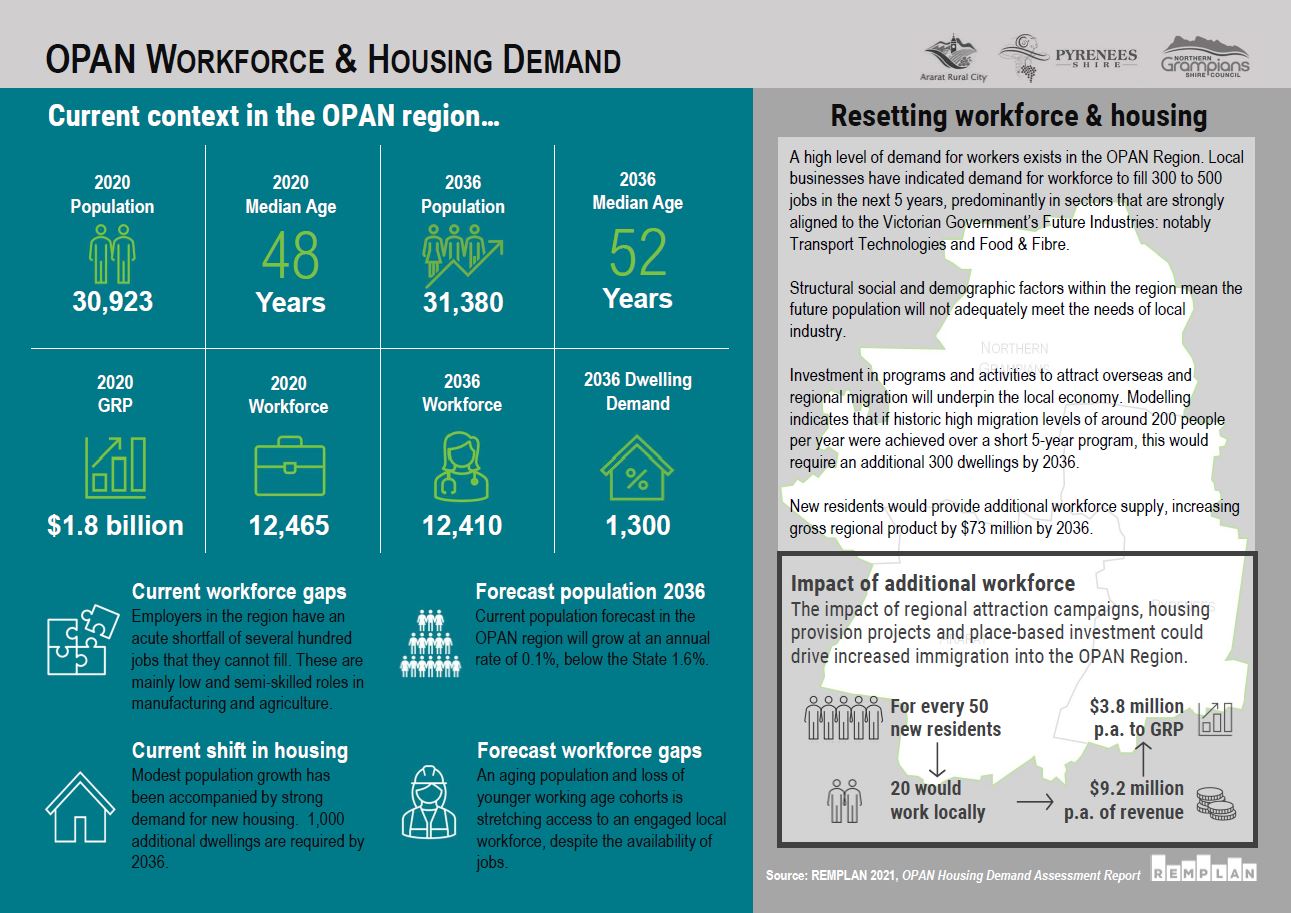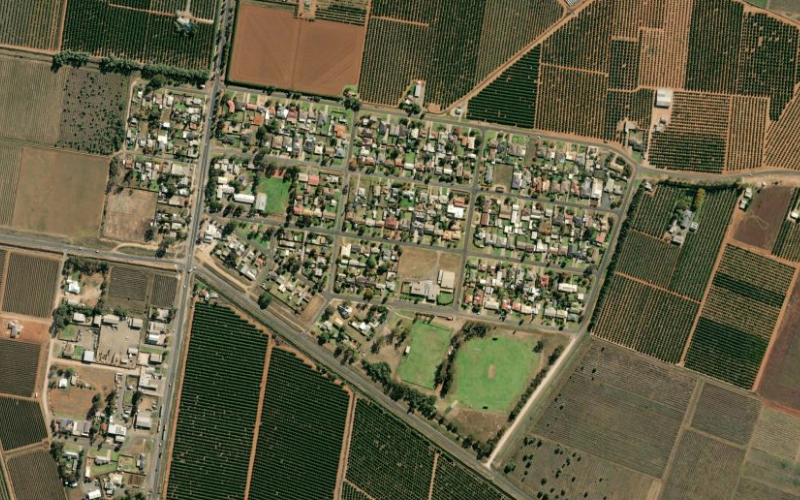OPAN Workforce and Housing Demand Assessment
The OPAN group is a collection of three municipalities in western Victoria, co-operating to address issues around workforce, housing, transport and migration within the collective region.Date
October 01, 2021

OPAN Workforce and Housing Demand Assessment
Employment & Innovation, Population & Housing ForecastsBackground
Located in Victoria’s central-west, the OPAN region is constituted from the three local government areas of Pyrenees Shire, Ararat Rural City, and Northern Grampians Shire.
Between 2016 and 2018 a series of engagement and strategic planning sessions were conducted by the three councils to identify priorities to develop collaborative solutions to local problems. The councils identified that a number of employers across the three municipalities were planning major expansion projects supporting a large number of new jobs. However, many employers were already experiencing chronic workforce shortages.
Many rural areas are being impacted by similar demographic changes, most notably:
- The general ageing of the population, and
- The increasing attraction of cities, commutable areas and lifestyle towns.
Combined, these two factors are resulting in population stagnation or decline in many rural areas which in turn creates other issues such as reduced levels of investment, a lack of workers, lower service retention, and declining business confidence. All these factors can compound to create a downward trajectory that requires significant and targeted interventions to address.
Another characteristic of the OPAN region is that modest population growth has been accompanied by relatively strong demand for new dwellings. This in turn has created a barrier for some new workers who wish to move to the region but cannot find suitable housing.
Project Goals
Stakeholders across the three OPAN municipalities were brought together to address the issue of existing and future workforce shortages. To analyse the issue, the OPAN group required preliminary investigations, and high level recommendations, into key factors of:
- Workforce planning
- Housing demand
- Transport services, and
- Migration opportunities.
REMPLAN was engaged to provide assessment of housing and workforce demand and to identify key drivers of population change, the short to midterm need for increased local workforce and the disconnect that exists between forecast housing need and regional shortages in the labour force.
REMPLAN’s Involvement
REMPLAN delivered detailed background technical reporting for population and housing needs, workforce planning, and designed and facilitated face-to-face and online stakeholder engagement.
Technical reporting for population and housing provided a comprehensive demographic profile of combined OPAN region, the three local government areas, as well as smaller subregions. The subregions included primary townships, secondary townships, and priority rural living areas. The demographic profile was then utilised as a base for preparing population forecasts under two separate growth scenarios. Finally, the population and housing technical report provided a housing needs assessment, incorporating elements such as dwelling characteristics, utilisation, housing costs, and demand.
The workforce planning technical report focussed on trends and changes in businesses, skills available in the local labour force, the migration of skilled labour, and the propensity for people to commute to work. The report also outlined the impact that the COVID-19 pandemic had on the region, as well as illustrating changes in labour force participation, time in unemployment, and medium-term trends in part-time versus full-time employment.
Supporting the technical reporting, REMPLAN facilitated a number of engagement sessions with key local businesses and stakeholders from various levels of government in order to understand future growth plans from businesses on the ground.
Results
The findings of the technical reports were combined with outcomes of stakeholder engagement and insights gained from a housing market needs analysis prepared by a sub-consultant, into a concise and well presented report and one-page infographic. The report outlined the key factors influencing population and workforce changes, provided scenarios on the economic impact of attracting new workers to the region, as well as outlining future opportunities or initiatives that could be targeted to address workforce shortages and housing provision.
REMPLAN also supported the OPAN group with a final workshop to appraise and prioritise potential initiatives.
The final population and housing forecasts were delivered through the REMPLAN Forecast software product. Results of the workforce assessment were delivered through a custom-built online application.








